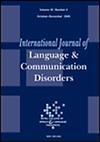The Stuttering Truth: Uncovering the Prevalence and Impact Amongst School Children in the Ablekuma South District, Ghana
Abstract
Background
Stuttering is a neurodevelopmental disorder affecting speech flow, often hampering social interaction and academic performance in childhood. However, data on the prevalence and impact of stuttering amongst school-aged children remains limited in Ghana.
Objective
This study aimed to determine the prevalence, gender distribution, hereditary patterns and impact of stuttering amongst school-aged children in the Ablekuma South district, Greater Accra region.
Methods
Using a cross-sectional study design, a multistage cluster sampling approach was used to screen a total of 829 children (7–12 years) from five public and private primary schools within the Ablekuma South district. Twenty-three (23) Children who stutter (CWS) were identified utilising a two-pronged approach that involved an initial screening by a class teacher and a subsequent clinical assessment by a licensed speech and language pathologist. The Overall Assessment of the Speaker's Experience of Stuttering (OASES) tool was used to determine the impact of stuttering on the participants.
Results
The prevalence of stuttering amongst the children was 2.77% (n = 23) with an average onset age of 5.02 ± 2.3 years. Male participants were approximately eight times at risk of stuttering compared to their female counterparts (p < 0.01; CI = 2.351–27.049). Majority (17, 73.9%) of the children who stutter (CWS) reported a family history of stuttering, primarily involving a biological parent. Also, a significant number of CWS, 87.0% (n = 20), reported that stuttering substantially impacted their wellbeing.
Conclusions
A section of school-age children in Ghana, particularly boys, may be at an increased risk of stuttering, with implications for the child's wellbeing. However, no formal system exists to detect CWS or identify the challenges CWS face in Ghana. A family history of stuttering can prompt early screening and evaluation. An efficient screening system that ensures early detection is essential to support affected students.
WHAT THIS PAPER ADDS
- Several studies have explored the prevalence of stuttering, its impact, and its prevalence amongst school-aged children. The majority of these studies took place in developed nations that provide early screening and intervention services for school-aged children.
- This study, the first in Ghana, adds to our understanding of stuttering amongst school-aged children. The prevalence of stuttering amongst this population is 2.77%, and males are eight times at risk of stuttering than females. The findings suggest that most school-aged children in Ghana experience moderate to severe impacts on their overall quality of life due to stuttering. Additionally, children who stutter in Ghana face challenges in accessing speech and language therapy services or social support through self-help groups.
- A significant number of school-aged children who stutter in a developing nation such as Ghana have no access to clinical services or formal support. Speech and language pathologists (SLPs) need to collaborate with educators to implement early screening and the identification of children who stutter. SLPs need to follow up after the identification of stuttering to provide speech and language therapy services to ensure children are not adversely impacted by it and, where necessary, refer them for psychological support.

 求助内容:
求助内容: 应助结果提醒方式:
应助结果提醒方式:


